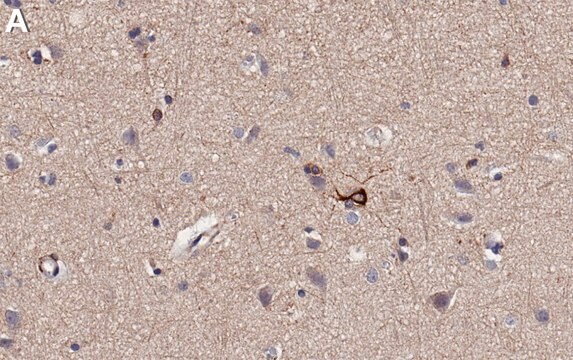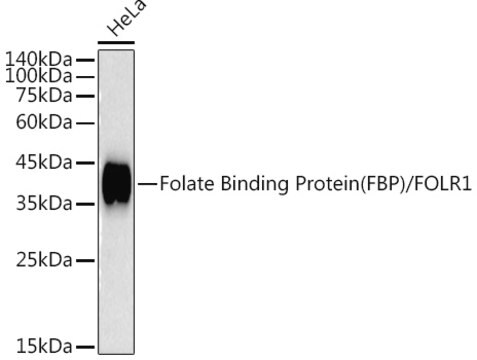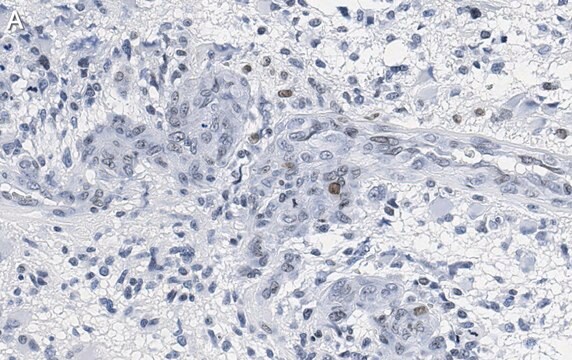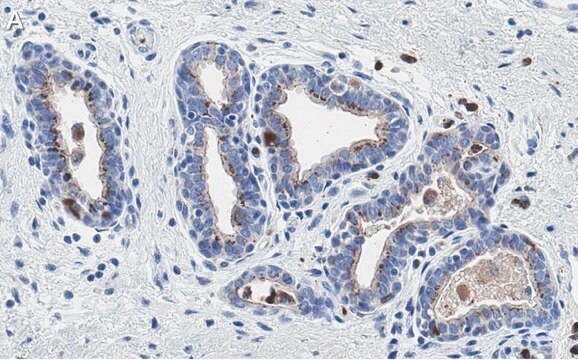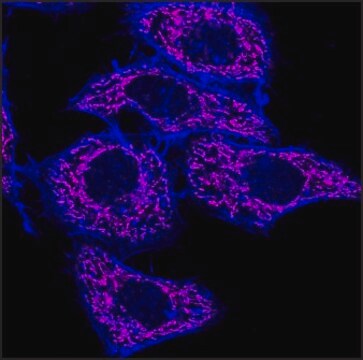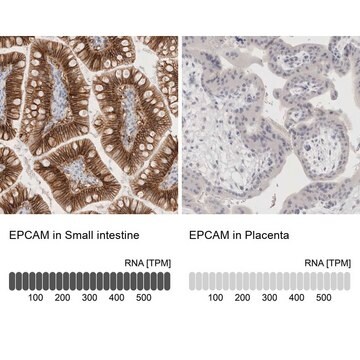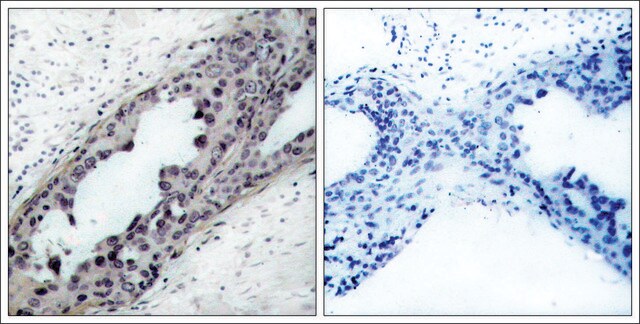一般說明
We are committed to bringing you greener alternative products, which adhere to one or more of The 12 Principles of Green Chemistry.This antibody is Preservative-free, produced without the harm or sacrifice of animals and exceptionally stable to allow for ambient shipping and storage if needed and thus aligns with "Waste Prevention", "Designing Safer Chemicals" and "Design for Energy Efficiency".
Click here for more information.
ZooMAb® antibodies represent an entirely new generation of recombinant monoclonal antibodies.Each ZooMAb® antibody is manufactured using our proprietary recombinant expression system, purified to homogeneity, and precisely dispensed to produce robust and highly reproducible lot-to-lot consistency. Only top-performing clones are released for use by researchers. Each antibody is validated for high specificity and affinity across multiple applications, including its most commonly used application. ZooMAb® antibodies are reliably available and ready to ship when you need them.
特異性
Clone 6H2.1 is a ZooMAb® Mouse recombinant monoclonal antibody that specifically detects Phosphatase and tensin homolog (PTEN). It targets an epitope within the C-terminal half.
免疫原
A recombinant fragment corresponding to 100 amino acids from the C-terminal half of human Phosphatase and tensin homolog (PTEN).
應用
Quality Control Testing
Evaluated by Western Blotting in HeLa cell nuclear extract.
Western Blotting Analysis: A 1:10,000 dilution of this antibody detected PTEN in HeLa cell nuclear extract.
Tested applications
Western Blotting Analysis: A 1:10,000 dilution from a representative lot detected PTEN in lysates from Rat brain and Mouse brain tissue and NIH3T3 cell nuclear extract.
Immunocytochemistry Analysis: A 1:100 dilution from a representative lot detected PTEN in MCF-7 cells.
Immunohistochemistry (Paraffin) Analysis: A 1:100-1,000 dilution from a representative lot detected PTEN in human breast cancer and human liver tissue sections.
Note: Actual optimal working dilutions must be determined by end user as specimens, and experimental conditions may vary with the end user
Evaluated by Western Blotting in HeLa cell nuclear extract.
Western Blotting Analysis: A 1:10,000 dilution of this antibody detected PTEN in HeLa cell nuclear extract.
標靶描述
Phosphatidylinositol 3,4,5-trisphosphate 3-phosphatase and dual-specificity protein phosphatase PTEN (UniProt: P60484; also known as Mutated in multiple advanced cancers 1, Phosphatase and tensin homolog) is encoded by the PTEN (also known as MMAC1, TEP1) gene (Gene ID: 5728) in human. PTEN, a member of the family of lipid phosphatases, contains an N-terminal phosphatase catalytic domain, a C2-domain that binds to phospholipid membranes, and a C-terminal regulatory tail. It is a dual-specific phosphatase that dephosphorylates both lipid and protein substrates. PTEN blocks the phosphatidylinositol 3-kinase/Akt signaling pathway by removing the phosphate in the 3-position on phosphoinositide-3, 4, 5-trisphosphate (PIP3). Dephosphorylation of PIP3 blocks Akt signaling. PTEN activity, stability, localization, and conformation are controlled through complex regulatory mechanisms, including the reversible phosphorylation of several serine/threonine residues in its unfolded C-terminal tail region (aa 351-403). Alternative translation of PTEN is reported to encode a 576-amino acid translational variant that is known as PTEN-Long with a 173-amino acid domain at its N-terminus followed by the classical 403 amino acids of PTEN. PTEN-Long is a membrane permeable, secreted protein that can enter other cells and acts as an antagonist of the PI3 kinase pathway. PTEN is considered a major tumor suppressor and its mutations are reported in several human tumors. Over seventy different types of PTEN mutation have been recorded in patients with Cowden syndrome. PTEN -/- mice exhibit higher levels of 3 -phosphorylated phospholipids and die during embryogenesis due to the failure of developmental apoptosis. This ZooMAbZooMAb® recombinant monoclonal antibody, generated by our propriety technology, offers significantly enhanced specificity, affinity, reproducibility, and stability over conventional monoclonals. (Ref.: Ferrarelli, LK., et al. (2019). Sci. Signal 16(577); eaax6492; Chen, C-Y., et al. (2018). Front. Endocrinol. 9; 338; Hopkins, BD., et al. (2013). Science. 341(6144); 399-402).
外觀
Purified recombinant mouse monoclonal antibody IgG, lyophilized in PBS with 5% Trehalose, normal appearance a coarse or translucent resin. The PBS/trehalose components in the ZooMAb formulation can have the appearance of a semi-solid (bead like gel) after lyophilization. This is a normal phenomenon. Please follow the recommended reconstitution procedure in the data sheet to dissolve the semi-solid, bead-like, gel-appearing material. The resulting antibody solution is completely stable and functional as proven by full functional testing. Contains no biocide or preservatives, such as azide, or any animal by-products. Larger pack sizes provided as multiples of 25 μL.
重構
300 μg/mL after reconstitution at 25 μL per vial. Please refer to guidance on suggested starting dilutions and/or titers per application and sample type.
儲存和穩定性
Recommend storage of lyophilized product at 2-8°C; Before reconstitution, micro-centrifuge vials briefly to spin down material to bottom of the vial; Reconstitute each vial by adding 25 μL of filtered lab grade water or PBS; Reconstituted antibodies can be stored at 2-8°C, or -20°C for long term storage. Avoid repeated freeze-thaws.
法律資訊
ZooMAb is a registered trademark of Merck KGaA, Darmstadt, Germany
免責聲明
Unless otherwise stated in our catalog or other company documentation accompanying the product(s), our products are intended for research use only and are not to be used for any other purpose, which includes but is not limited to, unauthorized commercial uses, in vitro diagnostic uses, ex vivo or in vivo therapeutic uses or any type of consumption or application to humans or animals.

